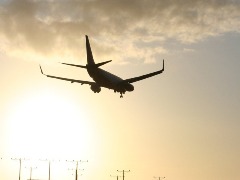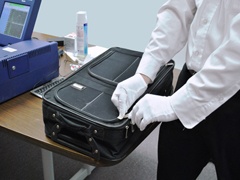 Aviation is a complex industry that is constantly growing. According to IATA, over 3.7 billion passengers will fly this year. In a day, approximately 100,000 total flights take place and more than 16 billion USD worth of goods travel by air.
Aviation is a complex industry that is constantly growing. According to IATA, over 3.7 billion passengers will fly this year. In a day, approximately 100,000 total flights take place and more than 16 billion USD worth of goods travel by air.
The global aviation industry is heavily relied upon by many and the demand for air travel will only grow. In fact, experts predict it will double over the next 20 years. That’s why security has and will always remain a top priority for those in aviation. So what types of challenges related to security does the industry face today?
Security Threats
One challenge faced by the industry is security threats. These threats can come from terrorist organizations, lone wolf radicals, or insider threats that draw attention by plotting attacks using firearms and improvised explosive devices. They can also carry out cyber attacks to damage intricate network systems. Any inside knowledge acquired or oversight uncovered will likely be exploited in a way that harms the industry and threatens aviation security.
Security Screening
 Another ongoing challenge is security screening. This may include checkpoints for staff and contract workers. Most travelers are familiar with passenger checkpoint screening and cabin baggage screening because they experience it firsthand at the airport. It also includes hold baggage screening as well as air cargo screening for shipments on passenger and cargo aircrafts. Each of these checkpoints is unique with the volume of people and items flowing through, screening methodologies used, standard procedures to follow, and types of threats or prohibited items to look for.
Another ongoing challenge is security screening. This may include checkpoints for staff and contract workers. Most travelers are familiar with passenger checkpoint screening and cabin baggage screening because they experience it firsthand at the airport. It also includes hold baggage screening as well as air cargo screening for shipments on passenger and cargo aircrafts. Each of these checkpoints is unique with the volume of people and items flowing through, screening methodologies used, standard procedures to follow, and types of threats or prohibited items to look for.
Security Training
Security training for staff is another challenge faced by the industry. At minimum, all staff working in and around the airport need to understand what aviation security measures are in place, why they exist, and best practices for keeping areas and information secure. Those who are directly part of the screening process must also be trained to recognize threat items, use X-ray equipment, metal detectors, and ETD systems as well as perform physical search procedures.
Operations
Day to day operations is another challenge for the aviation industry. Not only does each organization have to worry about the effectiveness and efficiency of their own performance, they also have to be concerned about compliance with government regulations. In order for operations to be successful, cooperation between airlines, airport operators, regulators, and equipment manufacturers must be well-managed.
Passenger Experience
 The passenger experience is also a challenge faced by the industry. With an increasing number of passengers, there is a pressure to make the checkpoint screening process quicker and easier. Any negative feelings travelers hold against the aviation screening process must be addressed.
The passenger experience is also a challenge faced by the industry. With an increasing number of passengers, there is a pressure to make the checkpoint screening process quicker and easier. Any negative feelings travelers hold against the aviation screening process must be addressed.
Summary
The global aviation industry is intricate and many rely on it to be secure and function effectively. Industry must find ways to recognize suspicious activities, understand the latest threats, and keep up with evolving concealment techniques. They must constantly amend and improve network systems, security checkpoints, and internal processes. Continual staff training ensures security controls are maintained and that staff are always at their best. There must be a balance between operational efficiency and safety for passengers and staff.
